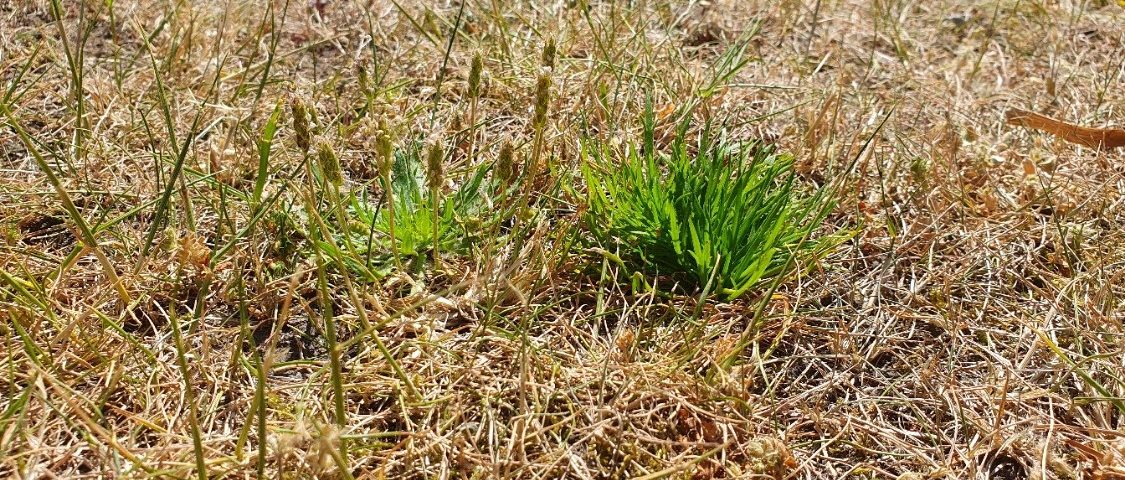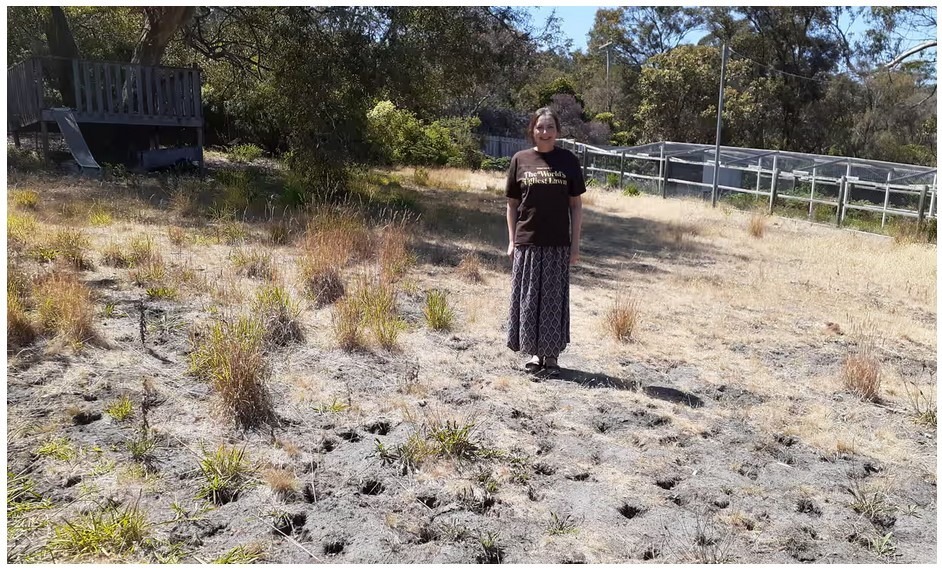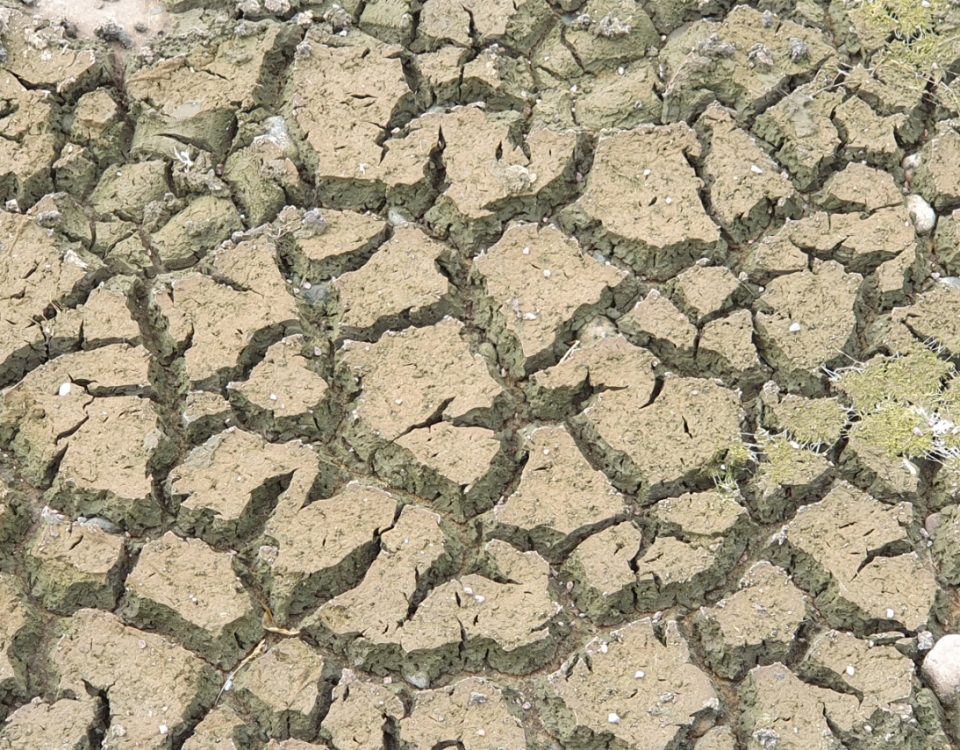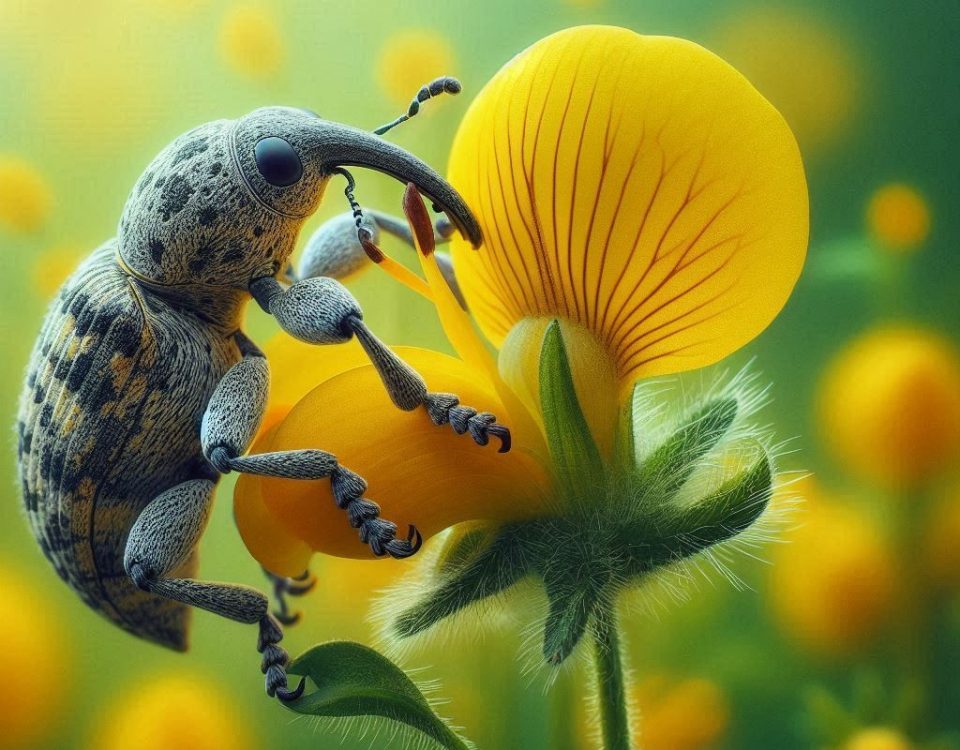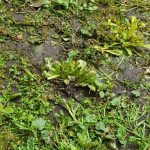
3. May – to mow or not to mow?
3 May 2025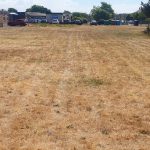
5. Dry lawns
23 May 2025Firstly, a frustrating niggle regarding posting comments has been resolved at last.
Comments are active now after some mysterious IT gremlin in the system refused point blank to co-operate, despite all the right boxes being ticked.
The technical team at my webhost were great, but even they and all their technical knowhow and wizardry had been unable to find and fix the niggling gremlin, we were all stumped.
Then, mysteriously three days ago the gremlin simply vanished of its own accord and a comment appeared; fingers crossed it stays away.

Bye-bye, cheerio, farewell, toodle-pip, avoir un voyage de merde, and all that….
Seems to me that No Mow May (NMM) this year is climatically serendipitous.
The lawns hereabouts on sandy soil are shrivelling, and it looks more like the end of Summer than the end of Spring.
Not mowing a lawn during a drought period is simply good sense, the lawn will be stressed enough without the added foliar damage caused by mowing.
So, even if you have a T-lawn, or are not specifically participating in NMM, an appropriate practical suggestion is that you refrain from getting out the mower until there is once again more moisture in the soil.
The current dry, sunny period has shown the differing effects such conditions have on forbs and grasses.
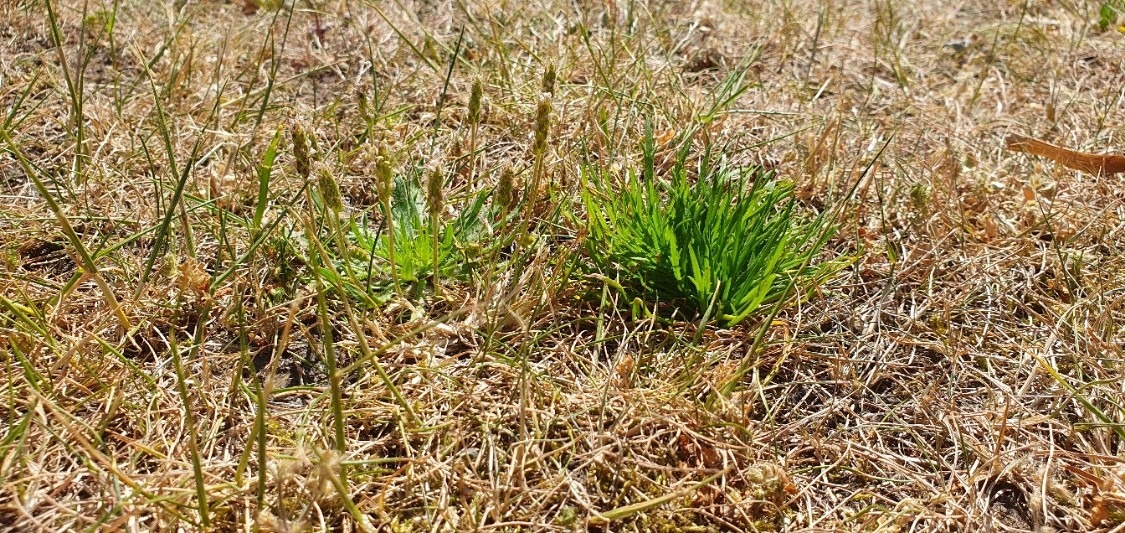
Buckshorn plantain (Plantago coronopus) in flower and still showing green in a currently browned and drought-stricken lawn.
Many lawn grasses respond to periods of drought by first slowing their growth and then moving moisture from their leaves to their roots. Their leaves change colour, usually yellowing and then going brown as they die back into dormancy. Their roots become their primary survival mechanism.
Grasses can remain dormant like this for a month or so, waiting for moisture, but will die if the roots completely dehydrate during this period. If you pull on grass and it comes away easily, it has likely died; if it resists, then the roots may still be alive but dormant.
Lawn forbs do not generally go dormant in the same way and tend to rely on their overall physiology, particularly the adaptations that their specific species has to water-stress conditions.
Forbs initially respond in a similar manner by slowing their growth and holding onto water in their stems, stolons, rhizomes, and roots; leaves may subsequently wither, particularly around the edges as a result, but this can often be enough for short periods of drought.
Annual forbs may perish in periods of drought, but will often desperately try to flower, and produce seed before they do, it is part of their long-term survival strategy.
Perennial lawn forbs can be deeper rooted and tap into moisture deeper in the soil. Additionally different species have different and variable leaf shapes, leaf waxes and leaf hairs (trichomes), and rely on them in combination to reduce water loss. Essentially, they try to hang in there and wait it out. It is one of the reasons why perennial lawn forbs tend to stay greener for longer in drought affected lawns.
Being primarily composed of forbs, tapestry lawns remain greener for longer during periods of drought – see re-issued images below. This not only looks more appealing in a garden situation, but continues to provide sustenance and refuge to the invertebrates that visit or can be found in lawns.
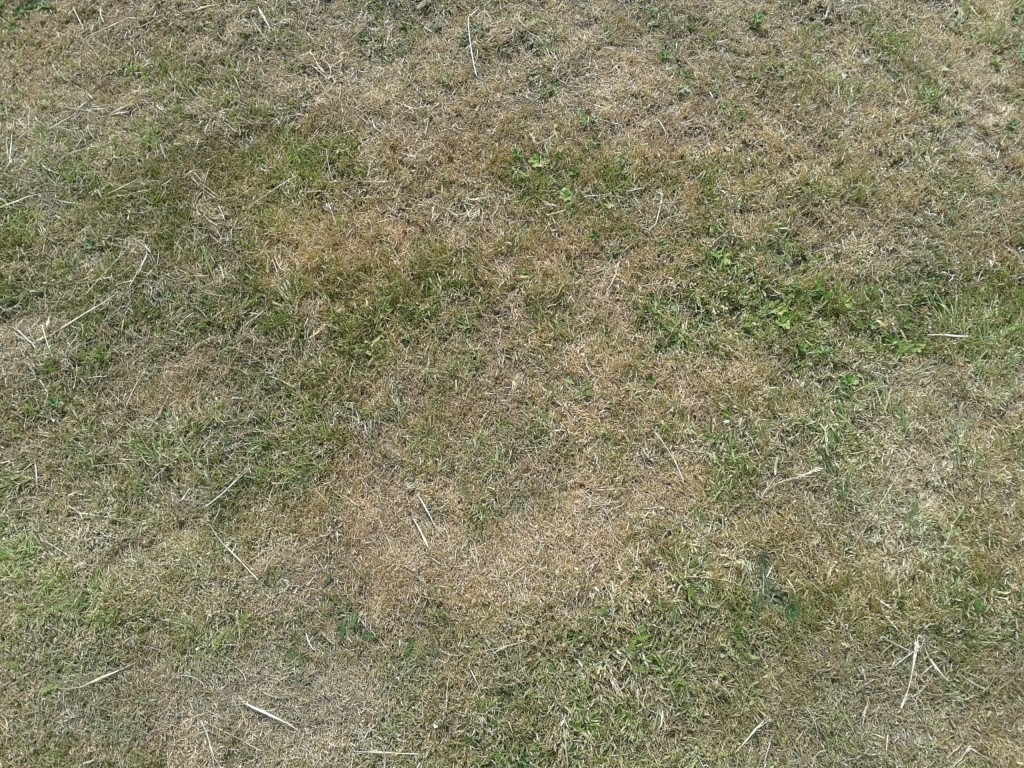
A drought affected grass lawn.
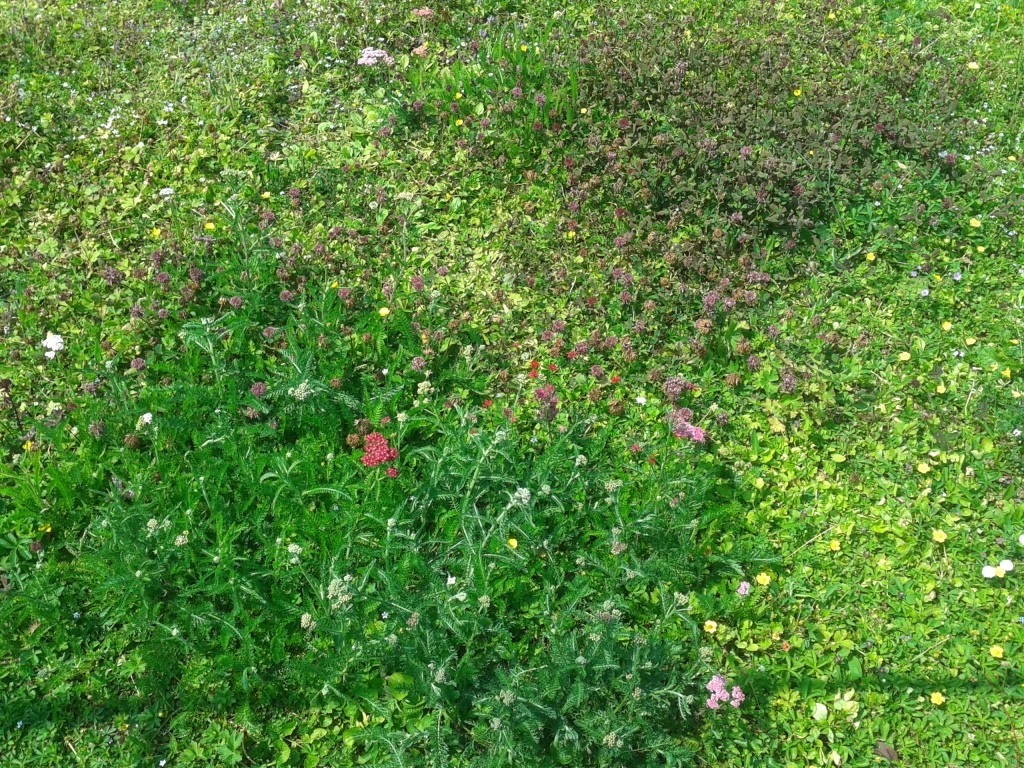
A drought affected T-lawn. Same day, same time, same soil and 5m from the grass lawn shown previously.
When the drought eventually breaks, dry soils with little living vegetation cover tend not to absorb water as swifty as soils that do. Initial unabsorbed surface run-off may contribute to any subsequent flooding.
Below, I have again included the water infiltration graph of observed differences between both grass and tapestry lawns on a loamy soil.
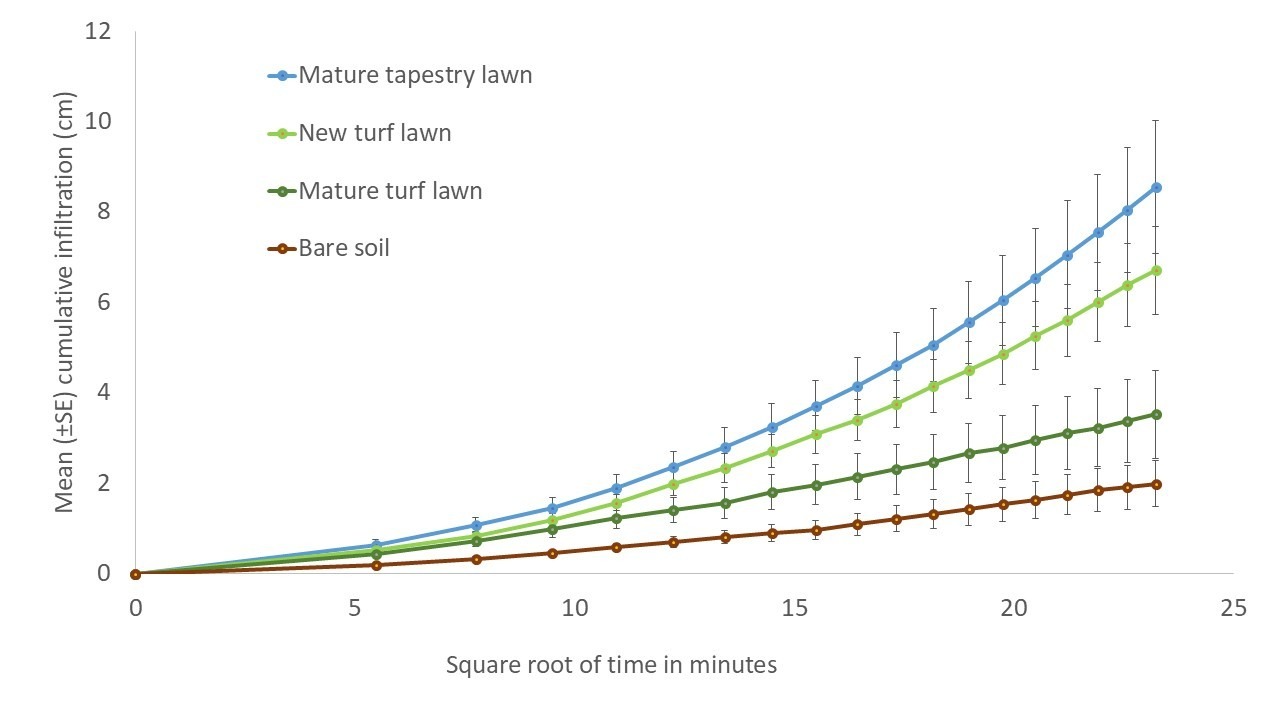
I suspect that the winner of the World’s Ugliest Lawn Award 2024 (shown below) has some drought and water infiltration issues…
The international competition, which started on the island of Gotland in Sweden, is about "celebrating land owners who conserved water during drought by not watering their lawns".
In homage, I, myself, am just off out, to go and not water the grass lawn, and the T-lawn does not yet need it.

